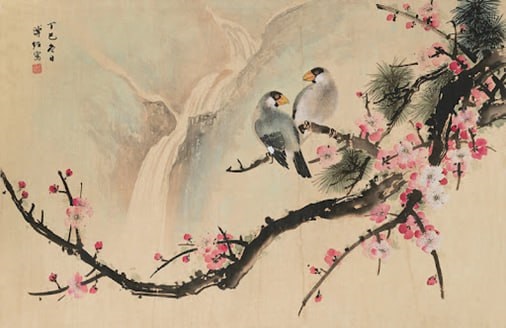
To begin my interesting journey of exploring China from the very beginning, I was part of the program that was designed to train foreign journalists in the country, which allowed me to visit a number of very different sites within and outside of Beijing, which were fascinating, enjoyable, or interesting. To be quite honest, I was taken by surprise by the fact that every corner of China is full of miracles and surprises. Everything I see in China never ceases to amaze me.
To everyone’s surprise, the length and breadth of China is full of miracles and surprises. It is totally beyond everybody’s imagination. It is no hyperbole to say that finding the right word to talk about China is tantamount to nailing jelly to a tree.
Similarly, China is beyond everybody’s imagination. I would say China is ahead of the rest of the world by approximately fifty years or so. Wherever one travels in China, experiencing moments of surprise or amazement is inevitable.
To get back to the point, one of the undertakings I took part in was a Chinese painting class. I would even go as far as to say it was a deeply immersive experience filled with beauties that told the story like no other art form I have encountered to this point. I utterly admired my instructor’s techniques.
Needless to say, Chinese paintings speak volumes of themselves. They communicate in their unique language through their visual storytelling, capturing emotions, philosophical ideas, and cultural values without words or someone explaining. They use aspects such as brushstrokes, compositional arrangements, symbols, and even blank space to convey their narrative stories and emotions.
Objects in nature, like mountains, water, trees, or animals, can invoke various meanings of Chinese beliefs such as living harmoniously with nature. The blank space in the painting is often as compelling as the fills of the painting for the reason that it evokes tranquility, depth, or even infinity.
I made an effort to draw a panda in class but not flawlessly. I know it takes time to improve, but I was a little disappointed. All the class students were trying so diligently to draw the panda as well as they could. We were all doing our best and working hard to improve. It helped me understand that practice is necessary, but it is alright to not be perfect immediately. Sometimes things take place step by step, and patience is a virtue.
All the trainees were putting in extra effort to learn as much as possible about Chinese painting. They were completely absorbed in the lecture given by the lecturer who was presenting many interesting facts about the topic. Everything needed to practice and understand the art form was made available. This included brushes, rice paper, ink, and water, all of which were laid out before us. These tools allowed practicing firsthand and really getting the information being taught.
Chinese brush ink, as a special medium itself has a manifestation of the spiritual realm. What is more, it is the unique temperament and character of Chinese culture. We were very excited and happy about the Chinese painting training session and felt on cloud nine filled with a zest for life and inspiration.
Everyone participated with their best effort to learn and practice drawing. We not only tried to improve our drawing skills but also diligently listened to the interesting and unique details about Chinese paintings. Besides, we were very keen to take in as much learning as possible making it a pleasurable learning experience in everyone involved.
The subject matter in Chinese painting can be broadly categorized as majestic, such as mountains and rivers or everyday need of engagement with life.
One of the most prestigious representations of Chinese painting addresses the majesty of nature through the use of solid forms of mountains, rivers, and forests or as ideation that reference nature. Another notable and commonly practice area of painting is flower-and-bird painting.
Flower-and-bird painting leads to representations of primarily flowers and birds as conduits of beauty in nature, but that are often celebrated for the harmonious relationship of humanity with nature.
In addition to landscapes or flower-and-bird, Chinese painters will frequently paint subject matter from historical accounts or literature.
Eager and curious to learn more about Chinese painting, I intended to investigate more thoroughly the topic by reading several books. I hoped to develop my understanding and create a clearer image of the definitions, historical typologies, cultural context, philosophies of Chinese painting and other related aspects.
I wanted to learn about styles, renowned artists, and notions such as harmony with nature; and discover its development over time as well as its relationship to Chinese value and tradition.
According to one of the sources I came across while researching Chinese painting, it was explained that with its unique form of expression and vivid cultural background, Chinese painting has attracted countless people’s admiration. The reason why Chinese painting has such a great charm lies in its performance. Those who draw Chinese paintings must start with ink and ink before they can explore the essence of the painting. The essence of Chinese painting is ink. Looking at the legacy of Chinese history and culture, most of them have the beauty of the soul created by ink and brush.
The source highlighted that among the painting theories of the past to the present, there is also a lot of importance in reminding the pen and ink. For example, Wang Wei, a famous painter in the Tang Dynasty, proposed in the book “The Landscape of the Mountains and Waters”: “Ink painting is the most popular among the paintings.” In the “Landscape Theory,” it is mentioned that “the meaning of the painting is first.” The painter of the Song Dynasty, Han Xuan, described the application of the pen and ink method in the Complete Works of Shanshui Pure. The brush and ink give Chinese painting a special creative idea, which explains the significance of brush painting in Chinese painting.
Whenever someone talks about unique mode of artistic expression backed by very rich culture, it draws to the fore the example of Chinese painting. This very quality makes Chinese painting charming-the practice. For most people, painting would mean using the optimum medium of ink and brush as a prelude to any further consideration of the art.
Perhaps considering all the portrayals today with their legacies in the past that have shown so much beauty have been done mostly with ink and brushes. Moreover, literature on painting theory from all eras also contains many references to pen and ink importance.
BY ADDISALEM MULAT
THE ETHIOPIAN HERALD FRIDAY 28 MARCH 2025




